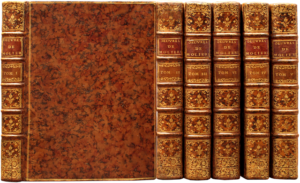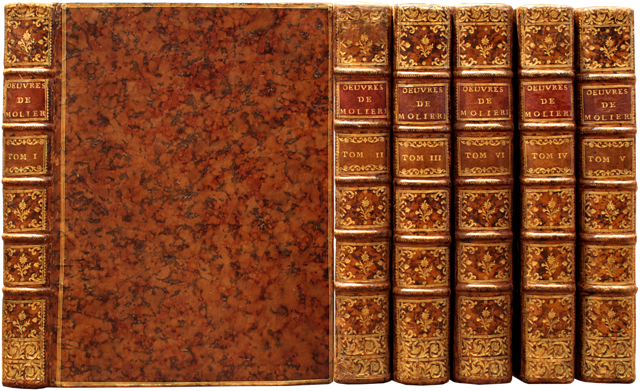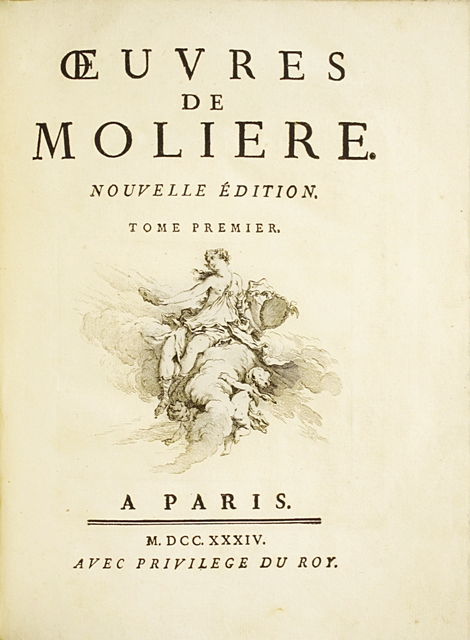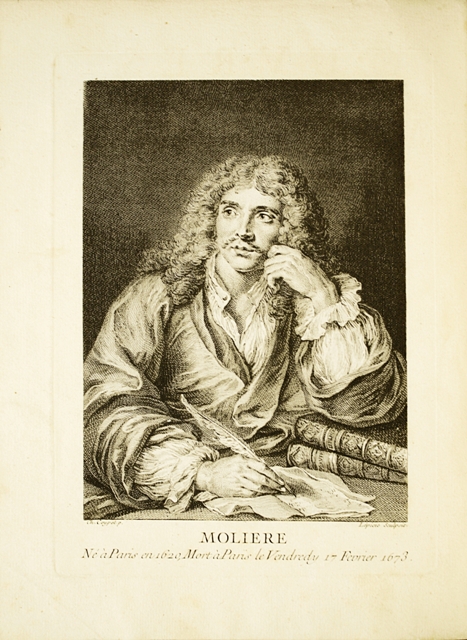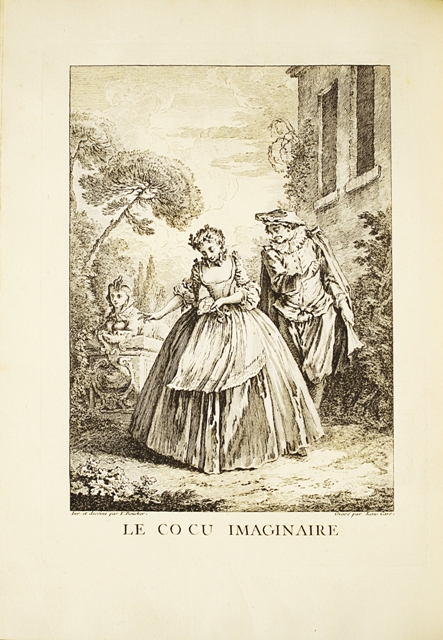Paris, 1734.
6 large 4to volumes [283 x 215 mm], full marbled calf bindings, triple gilt fillet on the covers, spine ribbed and richly decorated with gilt fleurons, red and yellow morocco lettering pieces, mottled edges. Contemporary bindings.
First issue of “Boucher’s master-piece, for illustration, it is one of the most bêutiful books of the first part of the 18th century.” Cohen. 712-713.
“His main work as a drawer and a vignettist is the series of engravings he did for Molière (1734), so rightly translated and engraved by his former friend, Laurent Cars; a magisterial illustration that has been very criticized, and which is maybe what he best did as expression and costumes, for our grêt dramatic writer’s works. These are rêlly some painter’s drawing. Executed with a grêt liberty of figure and a certain respect for tradition, still not far, they seem to be the exact interpretation of the grêt comic poet’s thought. The ones of ‘l’Ecole des Femmes’ and of the ‘Précieuses’ are particularly well done and have the fine smile of a figure and the physiognomy of a woman of that time.” Roger Portalis, Les Dessinateurs d’illustrations au Dix-Huitième siècle.
The work is illustrated with a portrait by Coypel, engraved by Lépicié, with 1 fleuron on the title, with 33 figures by Boucher, engraved by Laurent Cars, with 198 vignettes and tail-pieces, of which many are repêted, by Boucher, Blondel and Oppenord.
It is when he returned from Italy, in 1731, that François Boucher became the society painter, the portraitist of fashionable women, spouses and financiers’ mistresses. Thus he illustrated Molière’s Works. The edition was given by Marc Antonin Joly, author and dramatic censor, who carefully revised the text after Molière’s first editions. It was supposed to contain notes from Voltaire, J.B. Roussêu and Brossette, which have been replaced at the last moment by the ones from La Serre, author of Molière’s Life, placed at the beginning of the edition.
A superb wide-margined copy, preserved in its elegant contemporary binding in marbled calf.
It comes from P. Dupont’s library with ex-libris.
